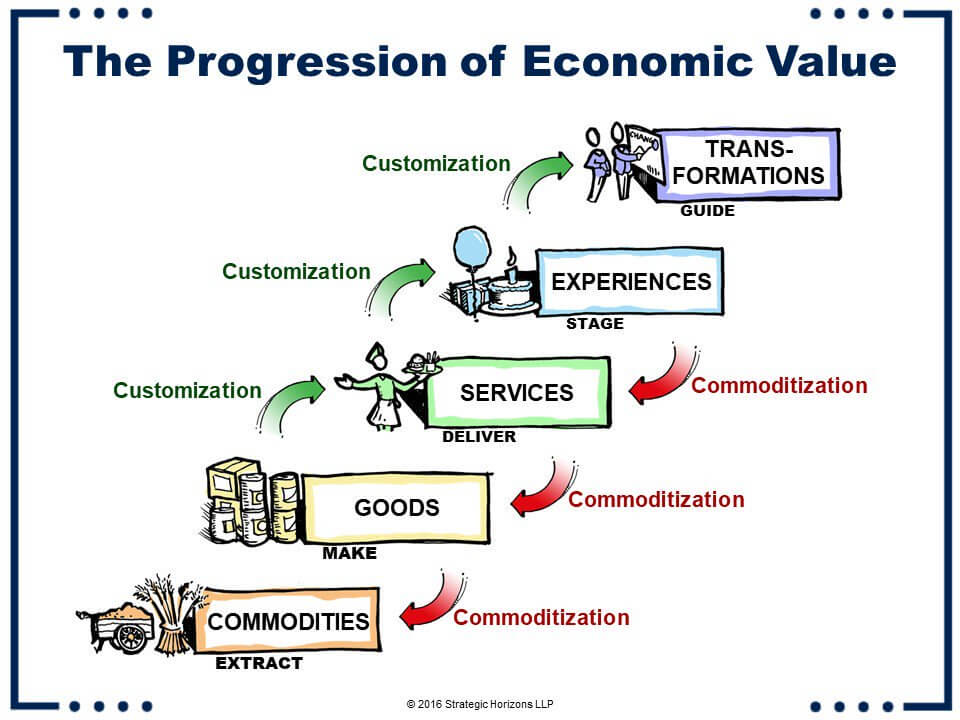Explaining how Starbucks is able to charge 180x the price of raw coffee
Published in: Selling Service Design Playbook
The progression of economic value model helps you to make a strong business argument for moving from a product to a service mindset. And escape the commoditization trap.

When to use it?
It’s not uncommon to find yourself in organisations that are currently still dominated by product thinking, logic and language.
If you want to help these organisations make the transition from products to services you need an easy way to introduce services and show why they matter to business.
How to use it?
The main message of this model is that the more your offering is tailored to the needs of your customer, the more customers will be willing to pay for it. Where commodities are the least tailored and transformations are the most. In general services can be better customized to fit the needs of customers than products.
So using this model you can show that services are an opportunity for product oriented business to create differentiation, open up new opportunities to generate revenue and gain a competitive advantage in the market.
Commoditization trap
You can also focus your message on the cost of offering generic solutions rather than on the customizations benefits.
Generic solutions sooner or later end up solely competing on the lowest price and get stuck in a race to the bottom. This is also known as the commoditization trap.
The reason why this message is often more impactful, is because your potential client probably has seen the commoditization trap in action and wants to avoid it.
Why it works
What makes this model so effective is that it lays out a clear roadmap. It shows a way forward. A goal to aspire to.
Using this model it becomes much easier to have a conversation with a stakeholder or client about where they are today and where they want to go next.
Example
A story that most people can relate to is the one about coffee.
The commodity in this story is raw coffee beans. When you roast, grind and package those beans they become a good/product customers can buy at their grocery store.
Now imagine that someone is serving you a cup of coffee at McDonalds. In this case the coffee has progressed in the model from product into a service.
An experience would be something like getting your favorite cup of coffee at Starbucks where you also can sit down to do some work.
When you do the math you’ll find that by offering an experience, Starbucks is able to charge 180x the price of raw coffee beans. Not bad.
So what’s would a transformation be? For instance going on a trip to see how local farmers harvest the fresh beans. Organized by your local barista.
Once you’ve gone over this model a few times you’ll be able to apply it to any business with ease. It’s an extremely powerful storytelling tool and a lot of fun as well.
So what would a transformation be? For instance going on a trip to see how local farmers harvest the fresh beans. Organized by your local barista.
Once you’ve gone over this model a few times you’ll be able to apply it to any business with ease. It’s an extremely powerful storytelling tool and a lot of fun as well.
Take action
- Make an empty copy of this model and show it to your client.
- Ask them what their customers are currently buying from them, products or services.
- Next ask what would be needed to progress one level up in the model.
- Now fill in the remaining stage of the model including commodities and transformation.
- Finally summarize the benefits of making the leap into services and the cost of not doing so.
Additional resources
- The Experience Economy – the book that introduced the progression of economic value model
